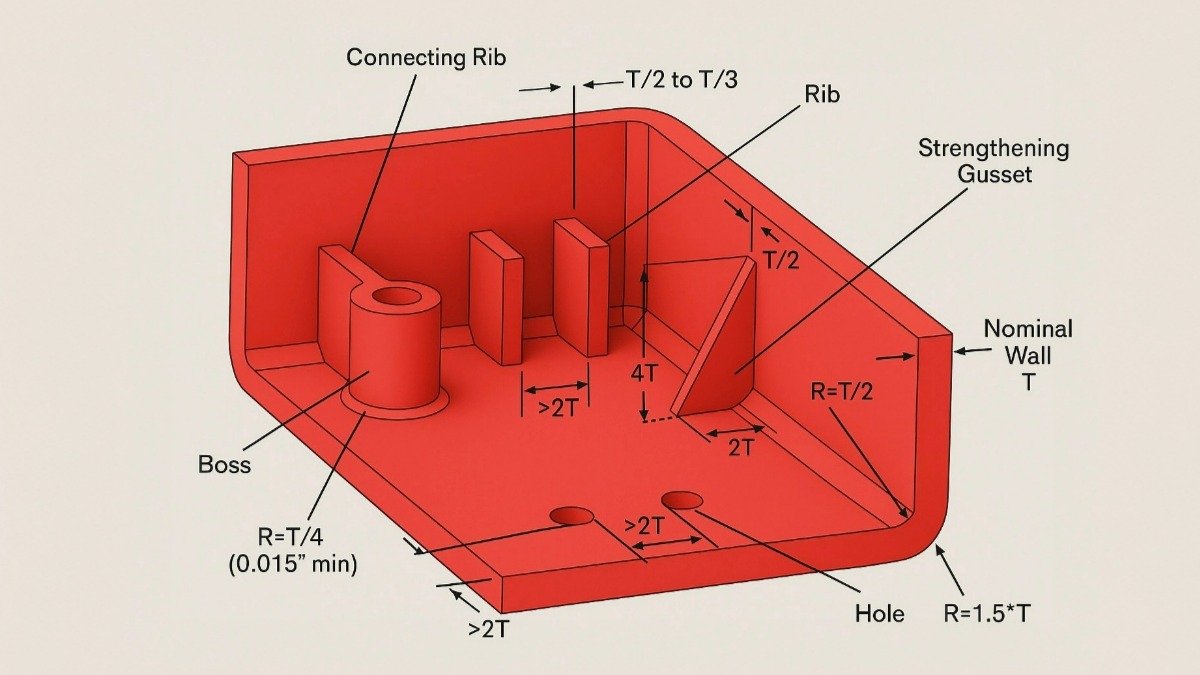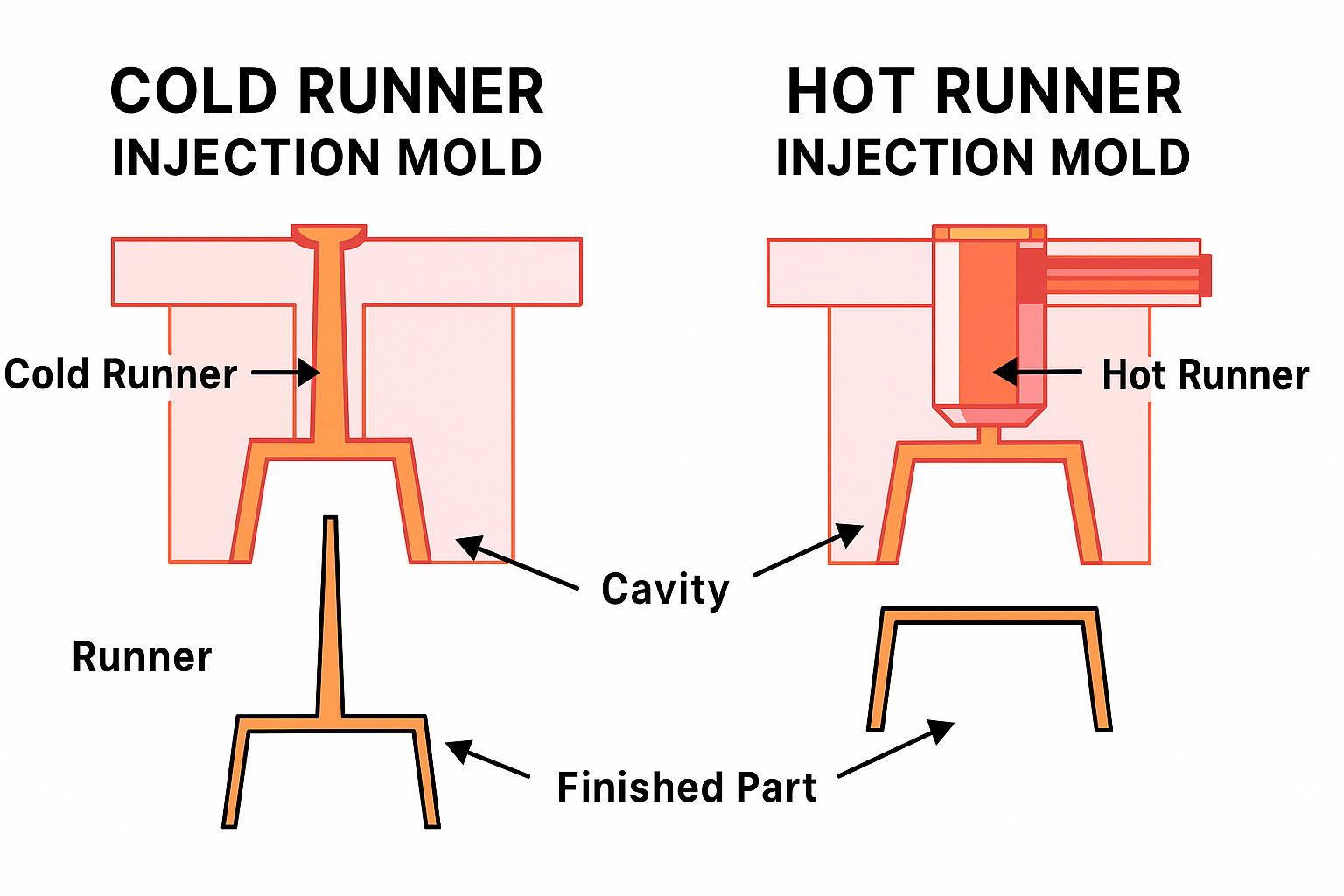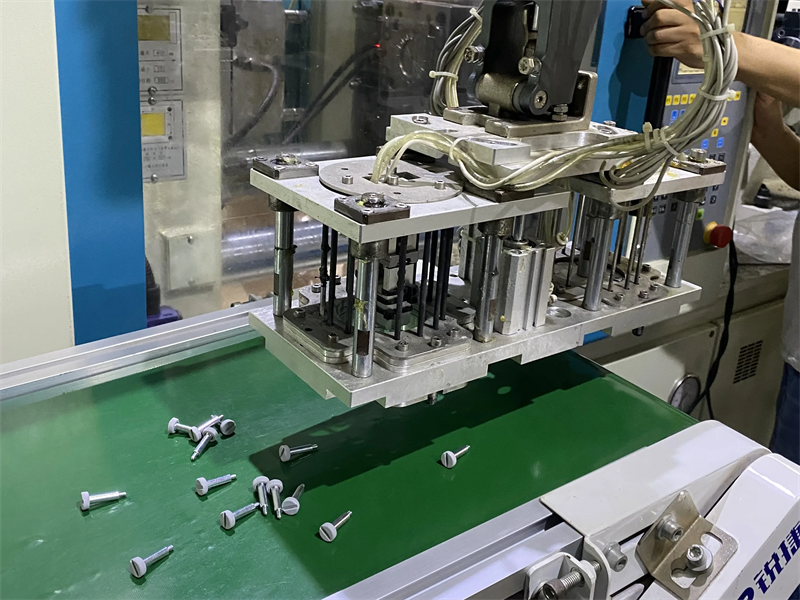Plastic Injection Molding: Pros and Cons | Complete Guide for Product Teams
Discover the advantages and disadvantages of plastic injection molding. Learn when to choose injection molding for your product and how to optimize cost, quality, and production speed.
Introduction
Plastic injection molding is one of the most widely used manufacturing processes for producing plastic parts in large volumes. It’s fast, repeatable, and capable of creating highly complex geometries with tight tolerances. But is it always the best choice?
In this guide, we’ll explore the key advantages and disadvantages of injection molding to help you decide whether it’s right for your next product development project.
What Is Plastic Injection Molding?
Plastic injection molding involves injecting molten plastic into a steel or aluminum mold under high pressure. Once the plastic cools and solidifies, the mold opens and the part is ejected. This process is ideal for mass production and has applications in nearly every industry—from automotive and medical to electronics and consumer goods.
Advantages of Injection Molding
1. High Efficiency for Mass Production
Once the mold is made, thousands—or even millions—of identical parts can be produced quickly with minimal variation. Cycle times are often under a minute.
2. Exceptional Detail and Precision
Injection molding can produce intricate designs with tight tolerances, often within ±0.05mm. It’s suitable for complex shapes that would be impossible with other processes.
3. Low Unit Cost at Scale
While the upfront mold cost is high, the per-unit cost drops dramatically as volume increases, making it highly cost-effective for large-scale production.
4. Wide Material Selection
From basic polypropylene to high-performance engineering plastics (like PEEK or Nylon with glass fiber), injection molding supports a wide range of materials, including flame-retardant, UV-resistant, or food-grade plastics.
5. Repeatability and Consistency
Each part is virtually identical to the next, ensuring consistent quality for every batch, which is critical for regulated industries like medical and aerospace.
6. Low Waste & Sustainable Options
Scrap plastic can often be reground and reused in the process. Bioplastics and recyclable materials also allow for more sustainable production.
Disadvantages of Injection Molding
1. High Upfront Tooling Cost
Creating the mold—especially if it’s a multi-cavity, complex tool—can be expensive, often ranging from $3,000 to $100,000+. This cost barrier makes it unsuitable for very low-volume runs.
2. Long Lead Time for Tooling
Designing, manufacturing, and testing a new mold can take 4–8 weeks (or longer), which can slow down initial product launches.
3. Design Restrictions
While complex shapes are possible, undercuts or deep features may require side-actions or sliders, increasing mold complexity and cost.
4. Difficult and Costly Design Changes
Once the mold is made, modifying it can be time-consuming and expensive. That’s why finalizing the design before tooling is crucial.
5. Material Limitations
Some specialty materials, such as those with very high melting points or abrasive fillers, may wear down the mold faster or require special tooling.
Is Injection Molding Right for You?
| Ideal For | Not Ideal For |
|---|---|
| High-volume production | Very low quantity runs |
| Products with tight tolerances | Rapid changes in product design |
| Consistent quality and repeatability | One-off or prototype parts |
| Complex geometries in a single part | Extremely large parts (size limitations) |
If your project requires tens of thousands of units, or involves precision plastic components, injection molding is likely your best bet. But for low volumes or rapidly evolving designs, 3D printing or CNC machining may be better alternatives.
📌 Tips to Maximize Success in Injection Molding
- Finalize your design before cutting the mold
- Choose materials that suit both function and moldability
- Work with an experienced mold maker and injection partner
- Consider using rapid tooling for small batches or testing
- Use DFM (Design for Manufacturability) reviews early on
📞 Call to Action
Looking for a reliable injection molding partner?
Our team helps startups and product developers turn ideas into reality—from mold design to mass production.



